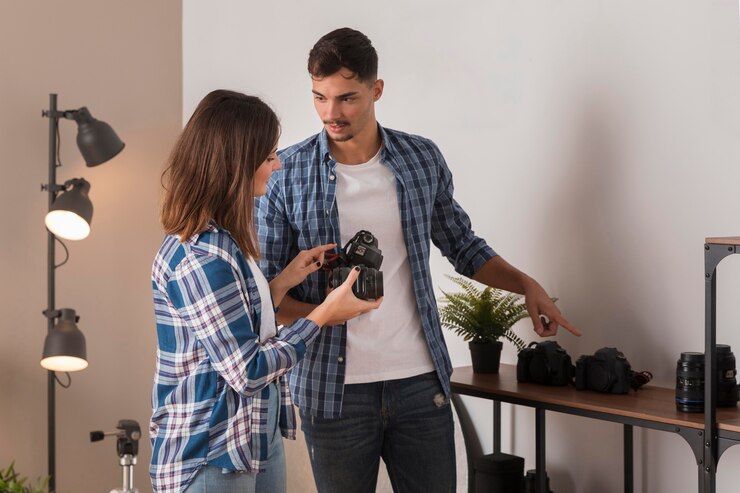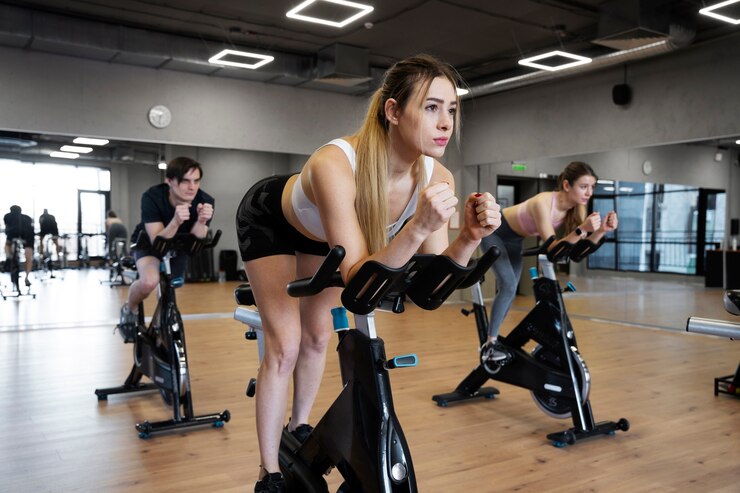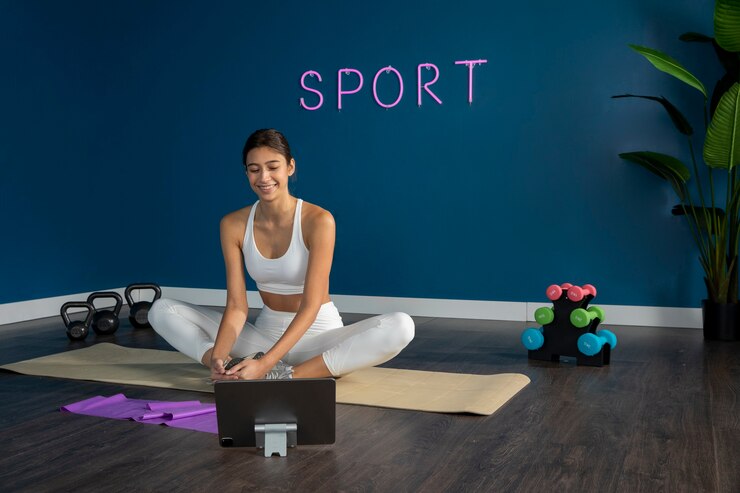
When you hear the term "marketing," what comes to mind? Facebook ads? Flyers? Billboards? This month, we’re thinking outside the traditional advertising and encouraging you to get creative in how you present value to your target client. We've discussed guerilla marketing, unconventional, inventive, and low-cost ads that engage your ideal target customer in creative ways. Now, we’re going to take it a step further and dive into event marketing so you can give your clients a taste of why your studio is special right out of the gate.
What is Event Marketing?
There are two main categories for event marketing that we'll cover in parts one and two of this series:
- Pop-up classes- where you teach a class in another location.
- Booth marketing- like at a health fair or farmer’s market.
Why You Should Consider a Studio Field Trip:
We’ve previously discussed that consumers are tired of traditional advertising. If you want to be noticed in a crowded market, you need to stand out. Event marketing is an experience that catches potential customers when they don’t have their marketing guard up. You can start a conversation organically and connect with potential customers more effectively than a print or digital ad can. Plus, an in-person discussion is two-way, meaning you can respond to clients’ concerns or questions in real-time rather than waiting for them to take the initiative to email and then wait for a response. Best of all, event marketing can be fun for the client and show them what makes your studio so unique by letting them see it first hand. It’s like letting them be a fly on the wall in your physical studio.
Events can also shake things up for your current clients. While a traditional advertisement is purely for new clients, event marketing can be for existing and potential clients. Market any studio field trips to your clients in the studio, allow them to sign up for pop-up classes, and encourage them (by rewarding them with prizes, raffles, or discounts) to bring a friend that’s new to your studio. Executed effectively, you’ll have a mix of new and existing clients at your events to help build energy and share on their own social media channels.

Let’s Break it Down:
Both pop-up classes and tent or table event marketing are an excellent way to get in front of your target client, but they each have important considerations to maximize your event. We'll cover pop-ups in this article.
Pop-Up Classes
A broad category, the best way to define pop-up classes is that if it’s a class that takes place anywhere other than your studio, it counts. These can range from a regular residency at a department store to an informal yoga in the park event. What matters is that your ideal prospective clients can experience your studio’s signature style in a neutral location. Although nearly anything can be considered an option for a pop-up class, not all sites are right for your studio, and what works for your business likely wouldn’t be suitable for a competitor. Before choosing a location, ask yourself:
- Would my ideal client usually frequent this location?
- Is the location appropriate for my modality? (Space, airflow, floor type, music, and sound capability, etc.)
- Does the pop-up bring anything other than simply a change of location to the class? (Walk-by traffic, access to the store’s contact list, signage space).
For example, depending on your ideal client, each of the following locations could be perfect or perfectly wrong:
- A bookstore is a cozy spot for a gentle yoga class, but if your format relies on loud music to keep the beat, it’s going to fall flat and feel awkward.
- An expensive department store would be ideal for a studio that caters to an exclusive, high-end crowd. But if you operate as a community pay-what-you-can model, your target client likely won’t find your pop-up or feel relaxed in class.
- The field next to a children’s park would be perfect for busy parents and to be seen by moms taking their kids to play on a Saturday. But if you target college students or retired folks, your chances of appealing to your ideal client are slim.
fitDEGREE can support your Studio Fitness
Examples of tried and true pop-ups
- Athleisure stores are almost always a winner. Lululemon and Athleta specialize in these events, of course, and can even help fill spots by marketing your event to their event calendar and email list. You’ll want to build a relationship with the store manager first so they can help you plan your class.
- Department stores- depending on where your ideal client shops, Nordstrom and Macy's (and the type) often host events in their athletic departments, which can put you directly in front of your target client during a busy shopping time like a Saturday afternoon.
- Small boutiques-local supporting local is almost always a wise business decision. Other small business owners understand your unique challenges and are more likely to pool resources in exchange for shared marketing. If you're nearby and share an ideal client, reach out to partner together.
- Retail stores aren't the only option for pop-ups. Farmer's Markets also make for an enjoyable experience. Try to stake out a spot near the foot traffic but not so close that it distracts clients. A grassy area nearby or a standing-only class off to the side are both great. Reach out to coordinators to get the go-ahead and bring your A-frame to let people know which studio you belong to.
- Parks and other novel outdoor spaces are exciting because the location is different than what we usually associate with boutique fitness. Mat pilates in the shade of a hiking trail, parent & tot yoga near a playground, boot camp on the beach- get creative and let your class be innovative, too.

You Picked a Spot- Now What?
Studio owners often prioritize the location and leave the marketing for later. But it's even more critical to get the word out for a pop-up than a regular studio class because pop-ups are meant to deliver a unique experience that showcases your studio's culture. That's hard to do with only a few clients in attendance. When creating your marketing plan, make sure to allow for enough time first to reach and then interest potential clients. If you're marketing to strangers, you'll need to build trust before you can expect them to sign up, and trust takes time. Give yourself at least six weeks to share your event in a variety of marketing channels, including:
- Your social media accounts*
- Your pop-up partner's social media (the business hosting the class)
- Ask your clients to share on their social stories and sign friends up
- Email marketing the event on your's and your partner's list
- Eventbrite and similar services
- Local bulletin boards, both online and in community spaces
- Google my Business weekly posts
- Studio announcements in class and at the desk
- Sandwich board or A-Frame poster with a QR code (or on your studio's window if you don't have a separate board)
*A note about posting to your social media- get creative with the types of posts you're sharing. If you always post to your feed, experiment with lives, videos, stories, and reels. The goal is for prospective attendees to see the advertising multiple times, so make sure you're posting your event regularly and uniquely a few times a week.
Next Step, How to Format Your Pop-Up
Scope out the location before you start planning, and take note of how many mats or bodies you can fit comfortably in the space. Do you want to haul props, or can you use bodyweight exercises? Are there fans and appropriate airflow? If not, consider skipping cardio or bringing towels for everyone in the class to borrow. How much time are you allotted? Before the movement portion of the class, build in time to introduce yourself to new clients and begin building rapport. Give your clients a reason to stick around after class, too. A giveaway or a day-of shopping discount can give you time to reconnect with clients after class to pitch your intro offer.
Other Class Considerations
Although you could teach your pop-up class in your physical studio, not every lesson plan will be appropriate for a pop-up. There are obvious issues, like a barre studio will have to go barre-less, but here are some additional considerations to keep in mind:
- Flooring- you may have a specialty floor in your studio, but it's almost guaranteed that you'll be on a less than ideal foundation for your pop-up. Keep that in mind as you format any jumping or floorwork. If you're on a sidewalk or other dirty outdoor surface, you may want to skip floor work altogether. You can modify, like subbing in standing abdominal exercises or skip it and focus on other exercises.
- Levels- Pop-up classes attract all kinds of clients. You'll likely have a combination of ability levels ranging from experts to first-timers who have been waiting for a neutral opportunity to try fitness. If you have assistants or loyal regulars in class, ask them to demo different skill level options and build modifications and amplifications into your lesson plan. Prepare for multi-level because it's usually the norm for these classes.
- Plan for an audience- The benefit of a pop-up class is the exposure, but be sure to keep that in mind when creating your class plan. Your client may not be comfortable doing some exercises (like bridge lifts) in front of an audience. When in doubt, ask yourself someone unfamiliar with your modality would be okay having their picture taken in that particular pose.
Make the Most of Your Opportunity
Of course, you want both new and existing clients to have a great class, but a pop-up class is more than the experience; it's your chance to be directly in front of potential members who may not have discovered your studio otherwise. Make the most of your captive audience by dialing in your sales process. While teaching, practice your "when statements" (also known as the assumptive close). Sprinkle in statements such as:
- When you're a member______
- When you take the advanced class in a few months ____
- After you sign up, you'll experience____
All of these statements whisper to your client, "you're going to sign up," without feeling pushy, and is one of the best strategies to convert a new client from pop-up to long-term member.
Along those lines, your sales pitch should be more than subliminal messaging and crossing your fingers. Ideally, bring an assistant to help you after class, but if you have to go it alone, strategize how you're going to get your clients' contact information and sign them up for an intro. Giveaways, raffles, QR codes, and social media follows are all quick and easy ways to capture contact information for later. It's more challenging to convince a client to purchase a package off-site, so lead with a short-term introductory pass that's only valid for the pop-up class, like a buy 2 get 1 class package. You're aiming to get them into your studio to continue the conversation, not necessarily to sell them a 12-month membership immediately.
The opportunities for pop-up classes are endless; you simply need to determine where your ideal client is already spending their time and meet them there. Survey your current clients and ask where they shop and hang out if you're unsure. It's always safer to ask than guess. Start scoping out pop-up locations, and we'll dive into booth and table marketing in part two of our event marketing series.













.jpg)












.jpg)










.jpg)










































.jpg)





























